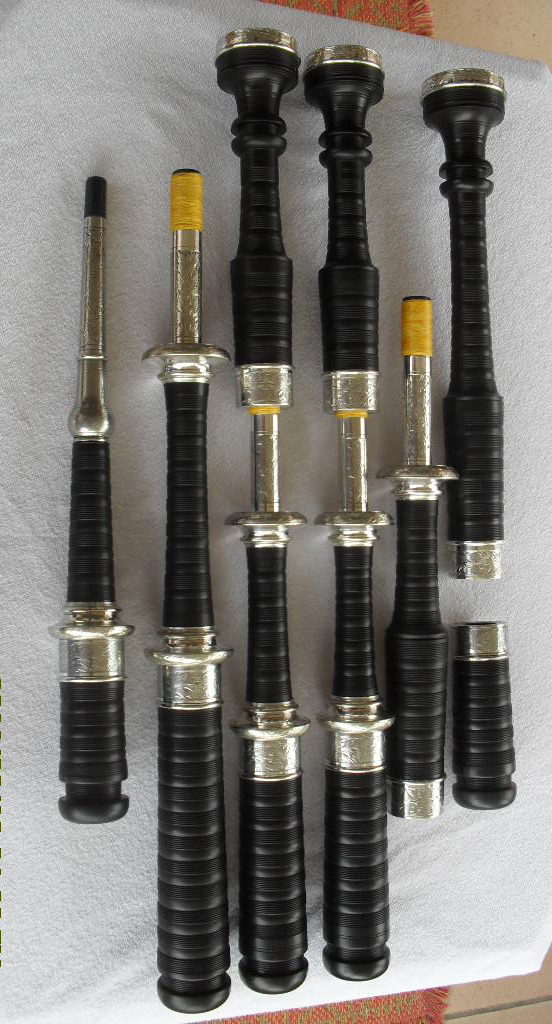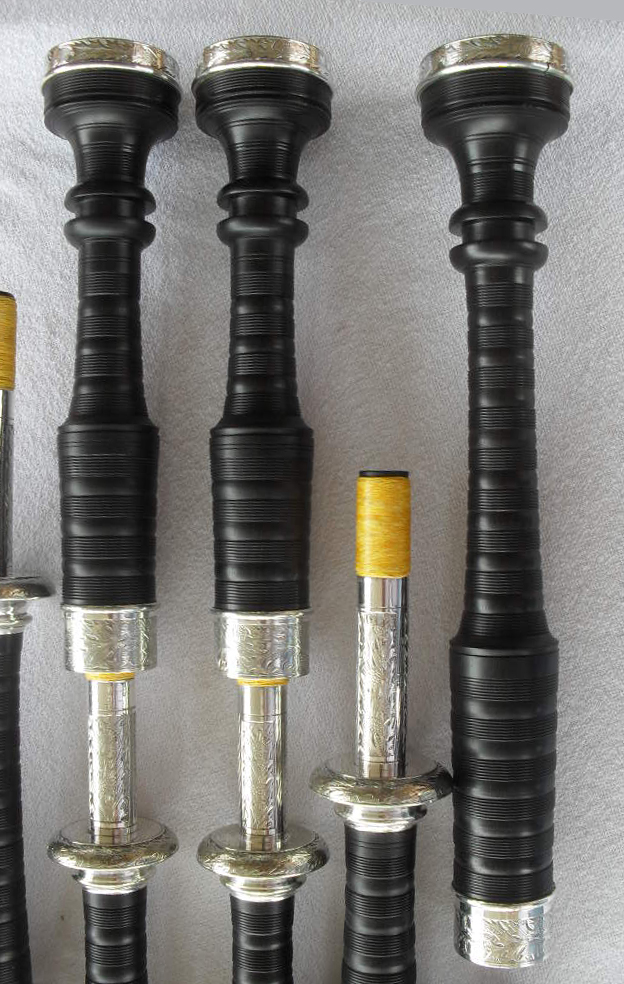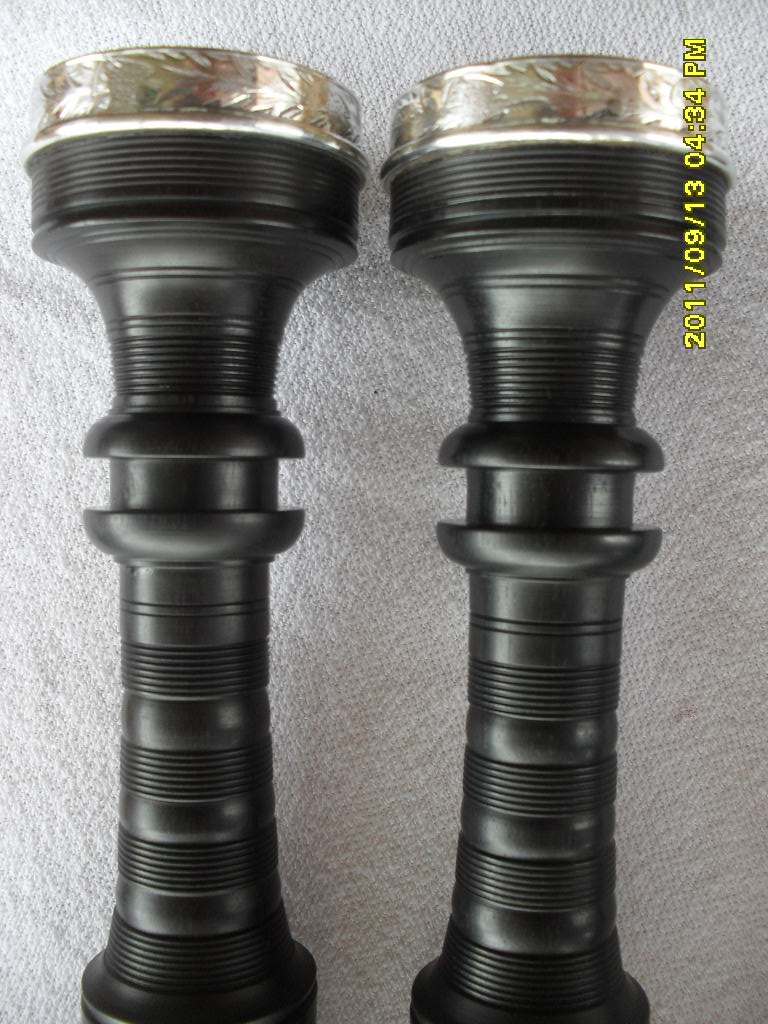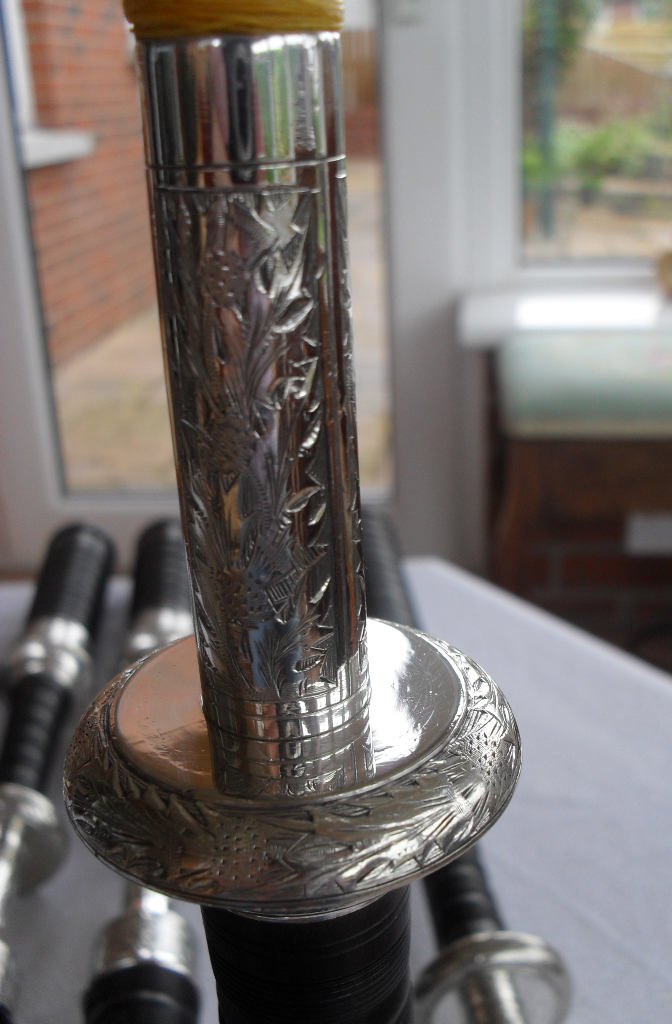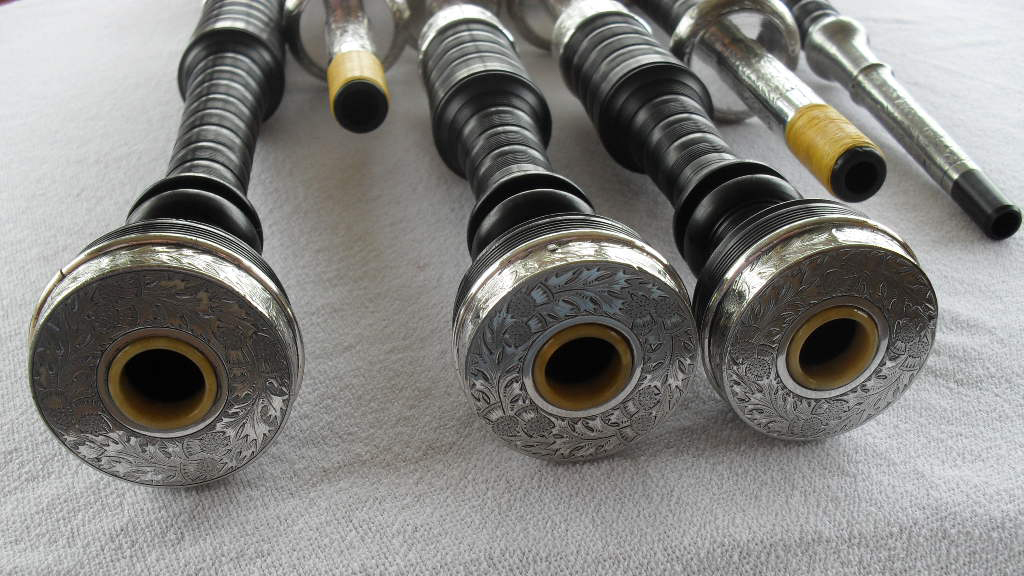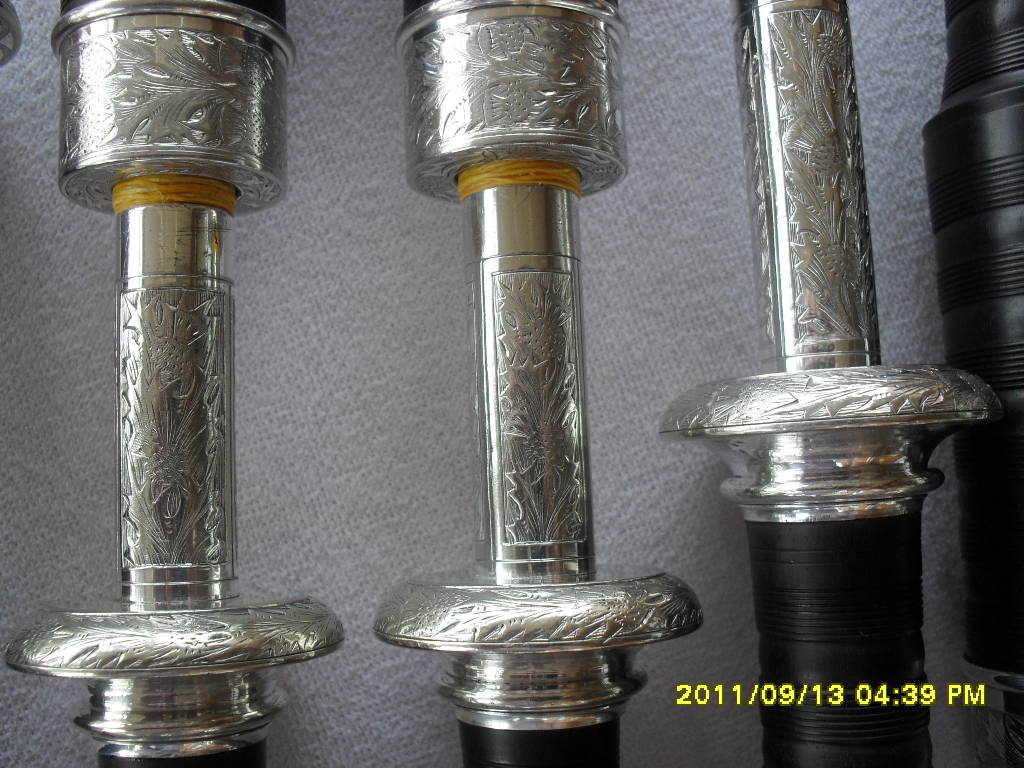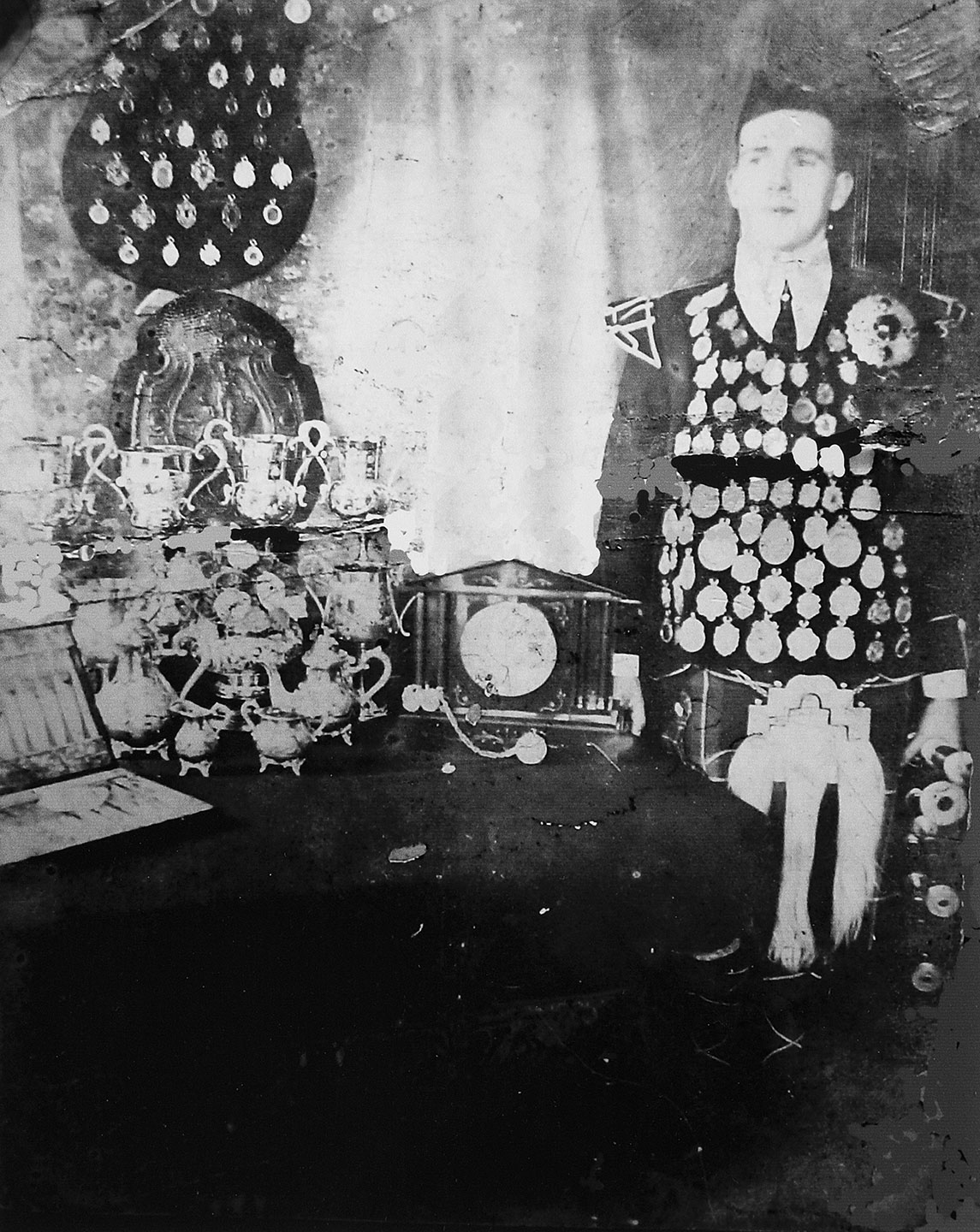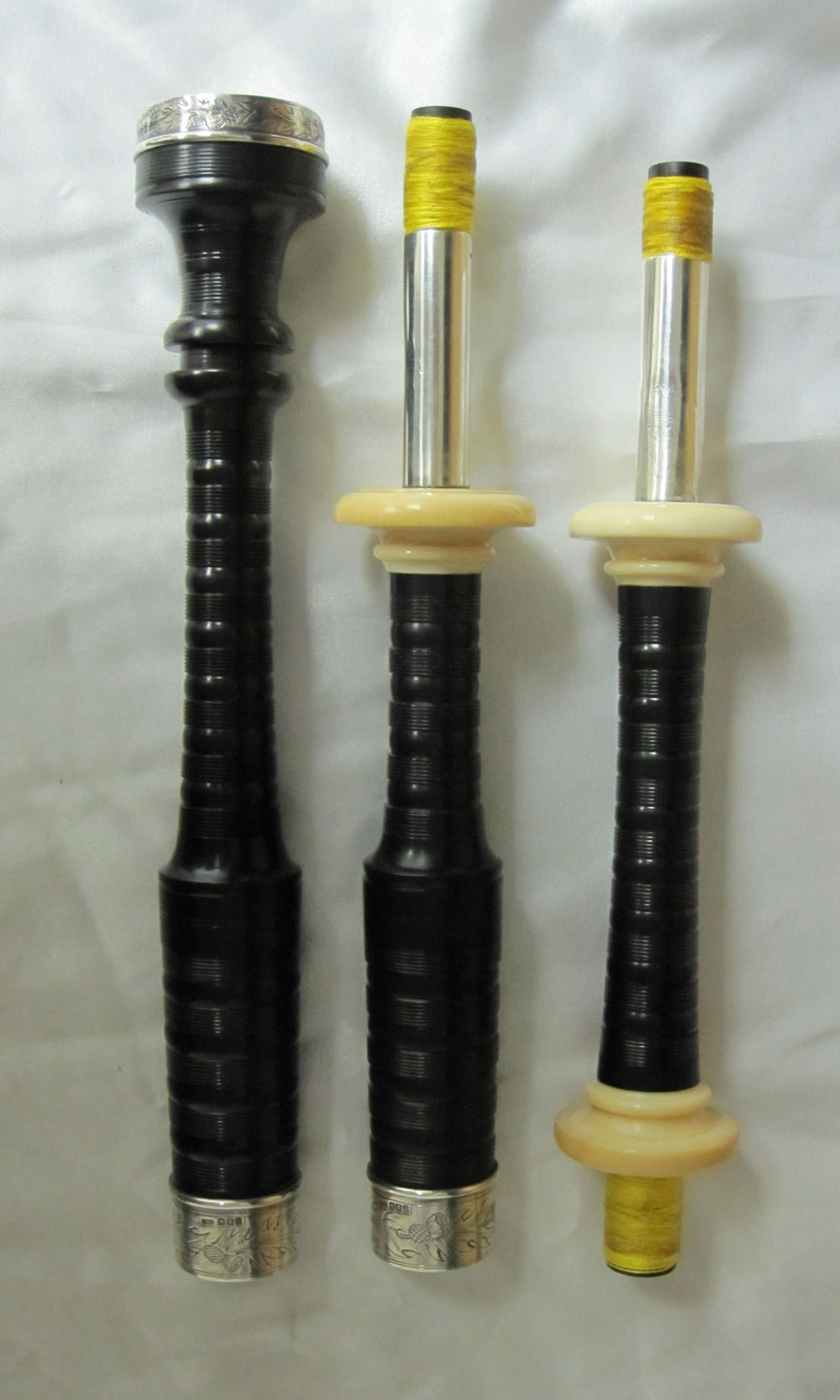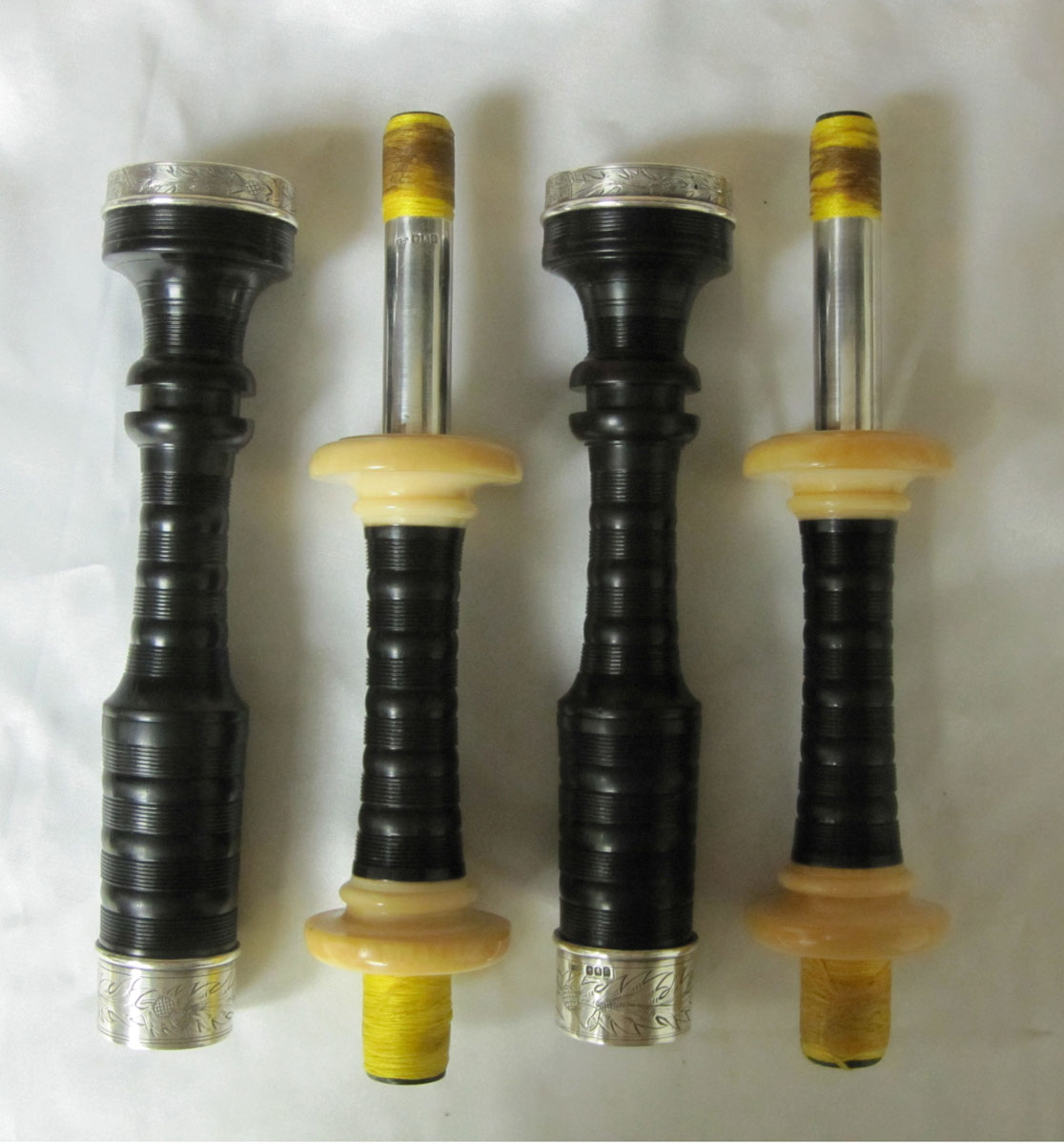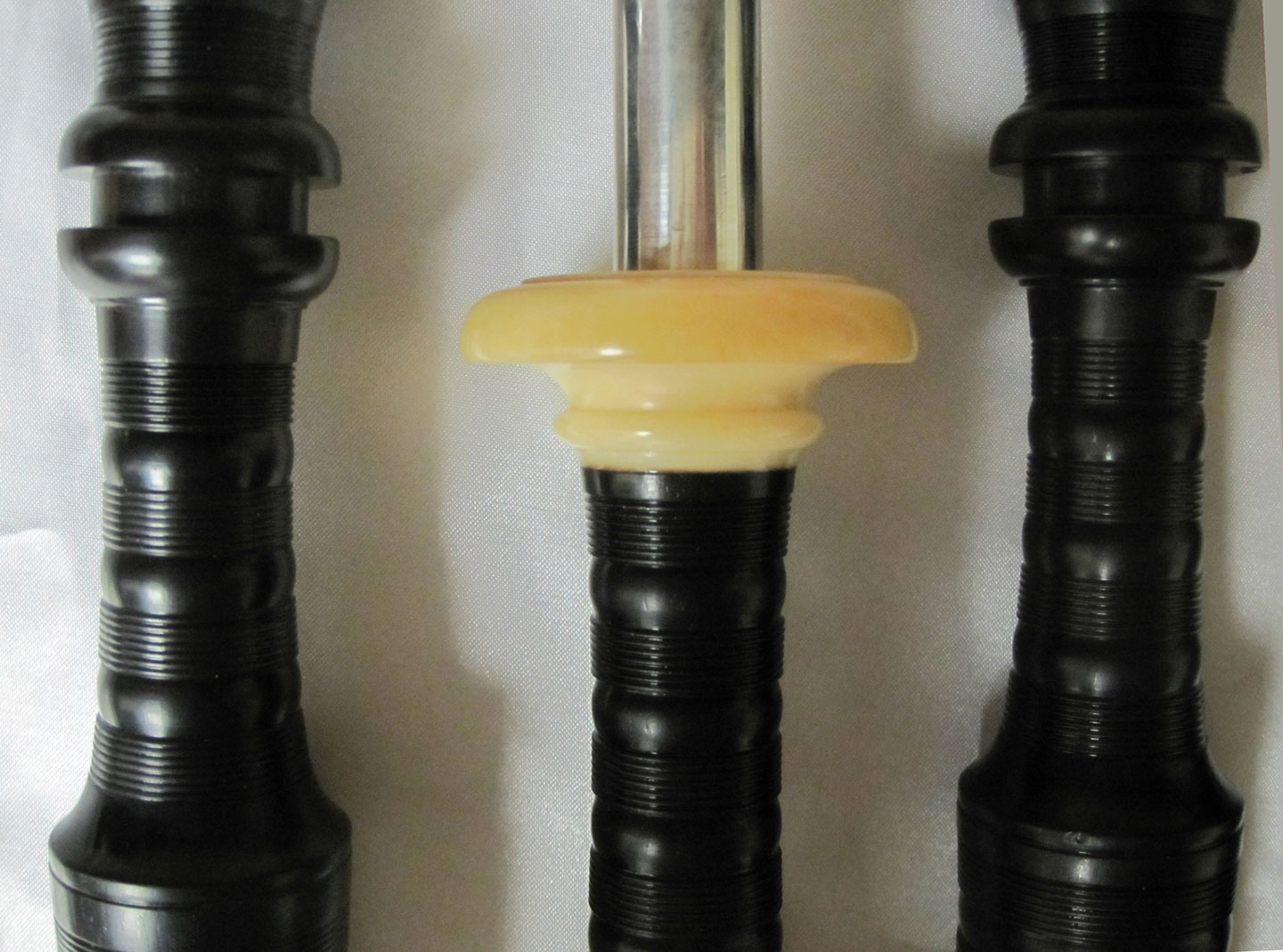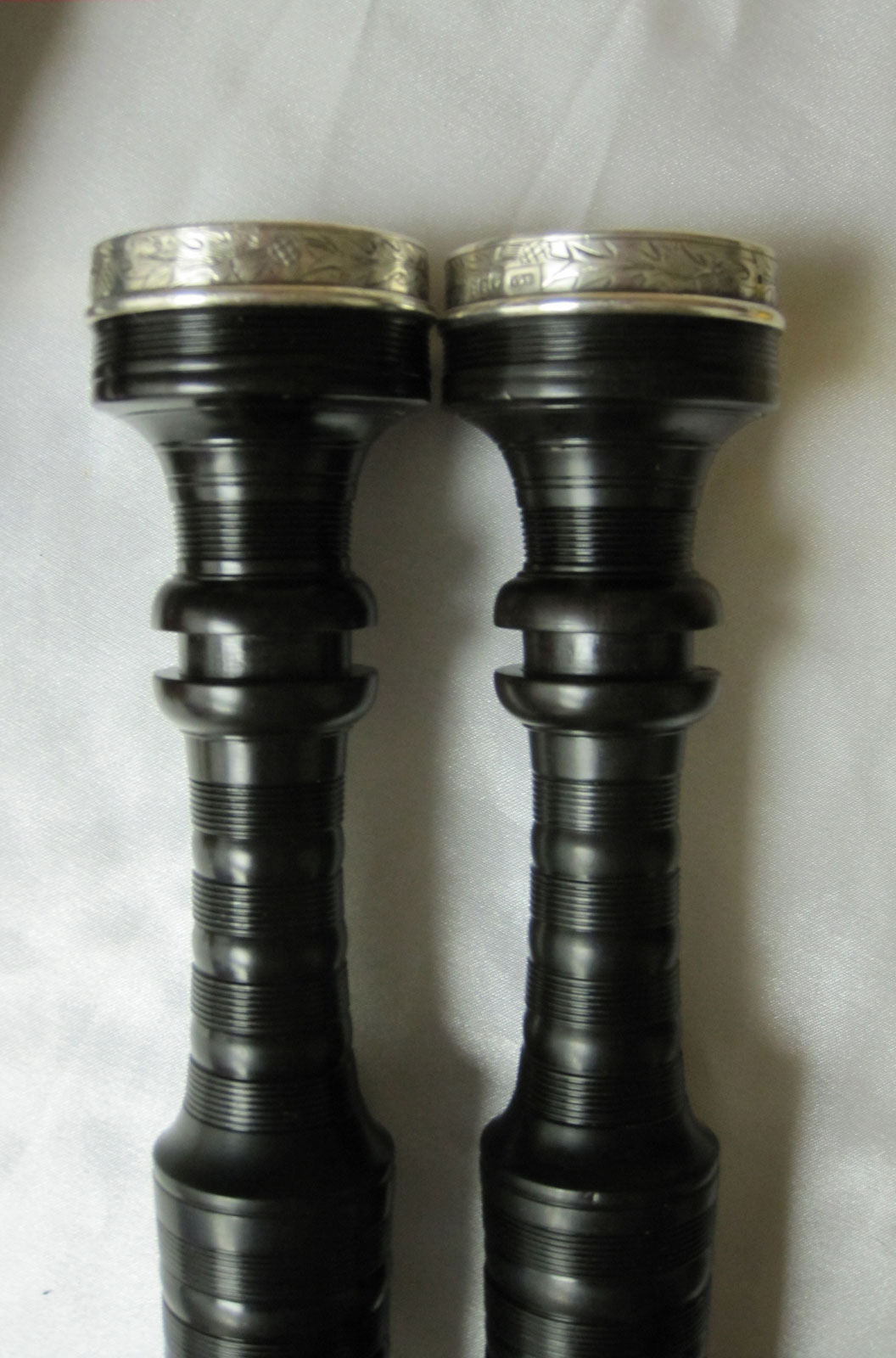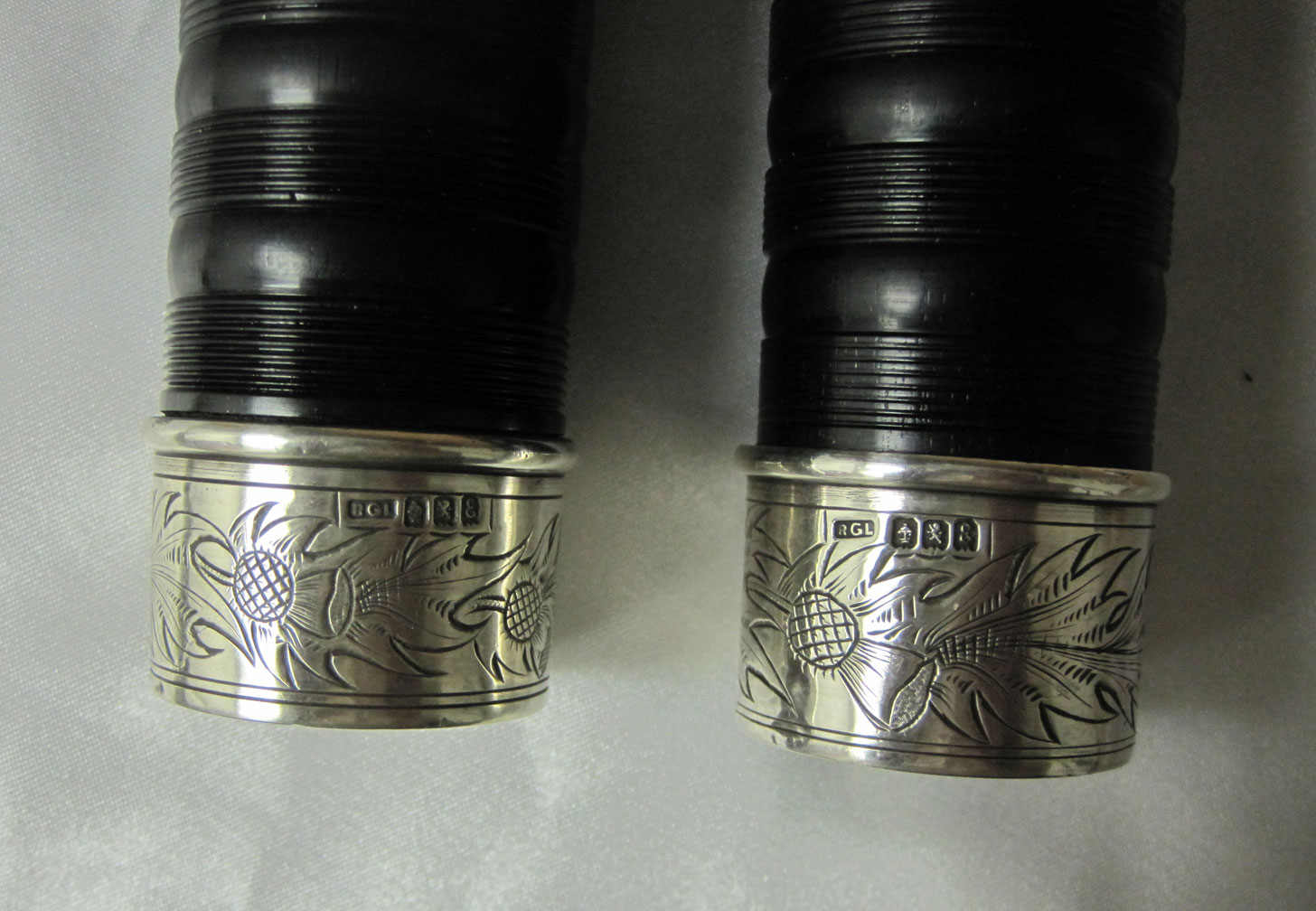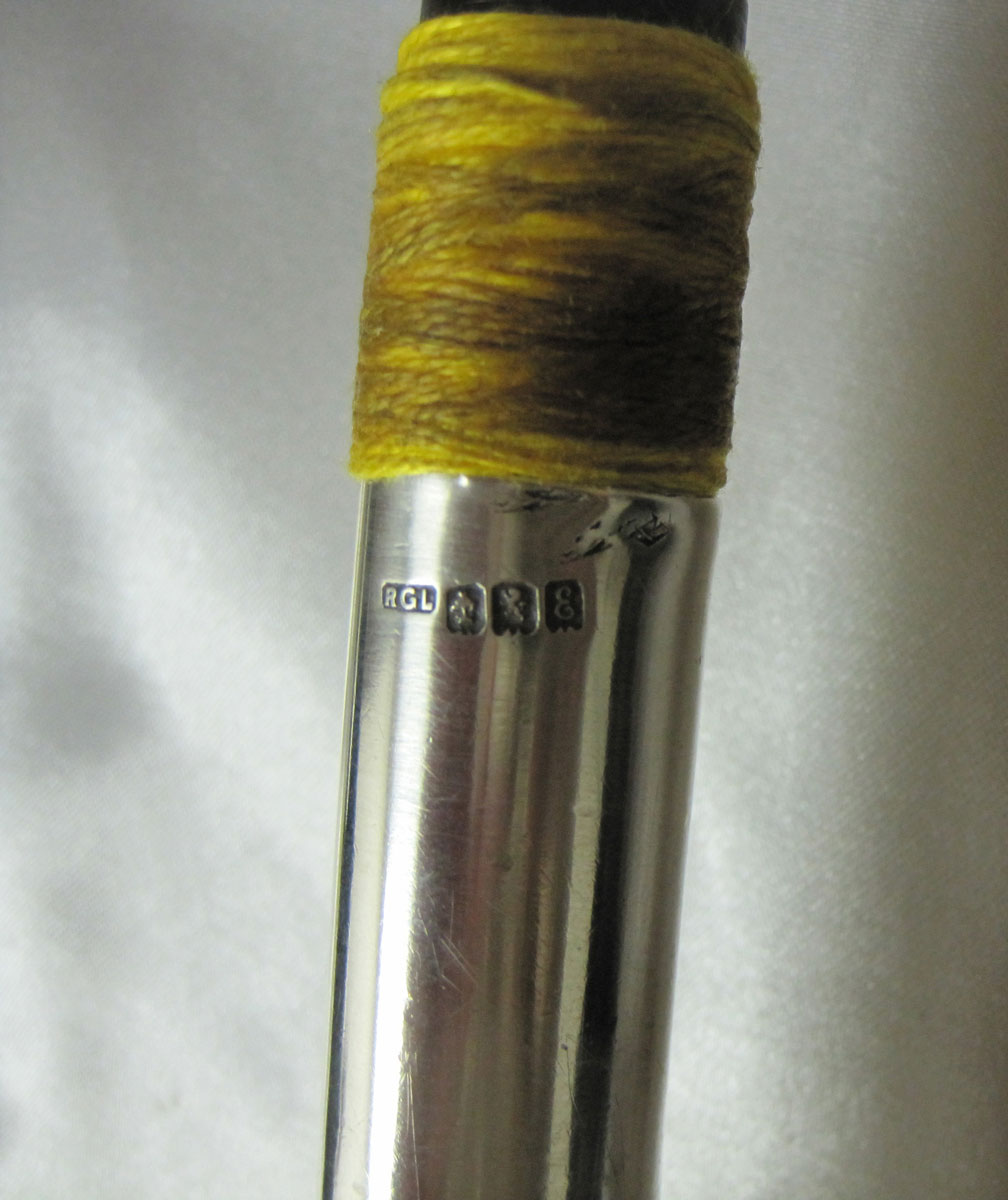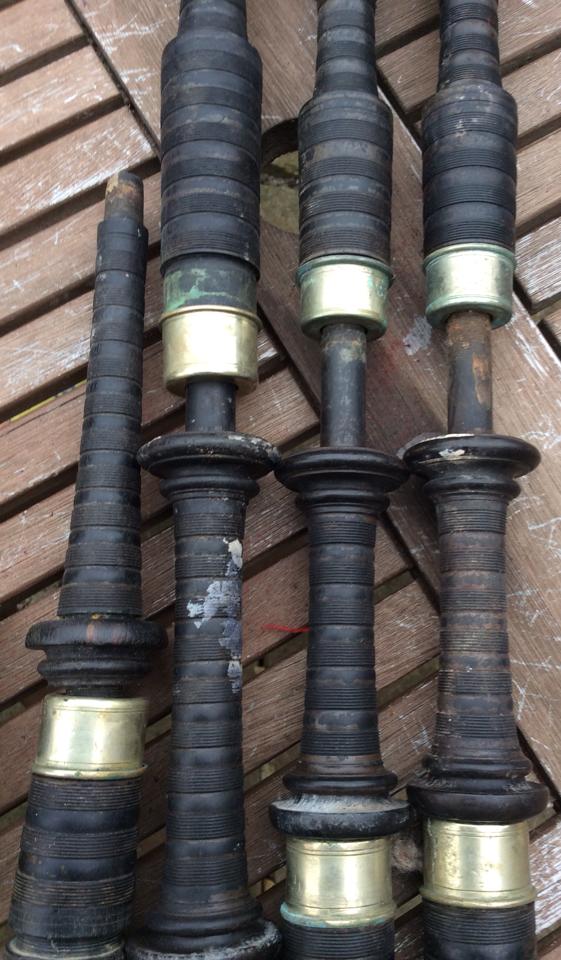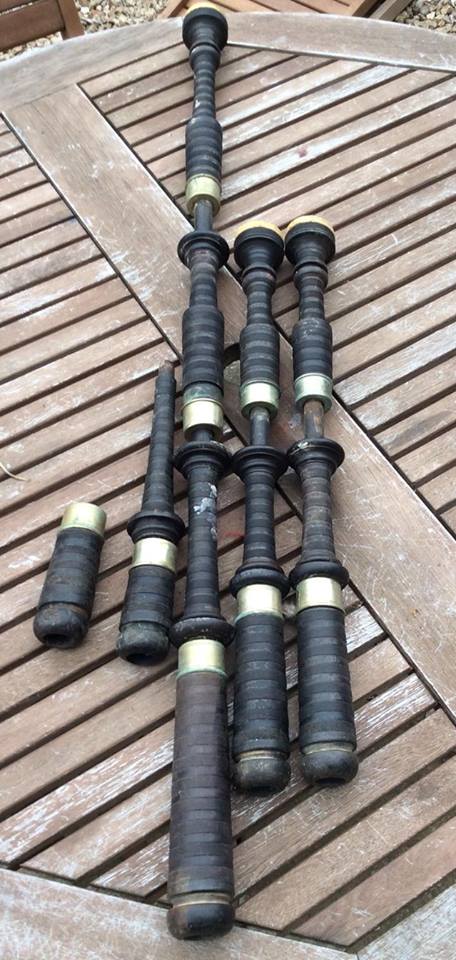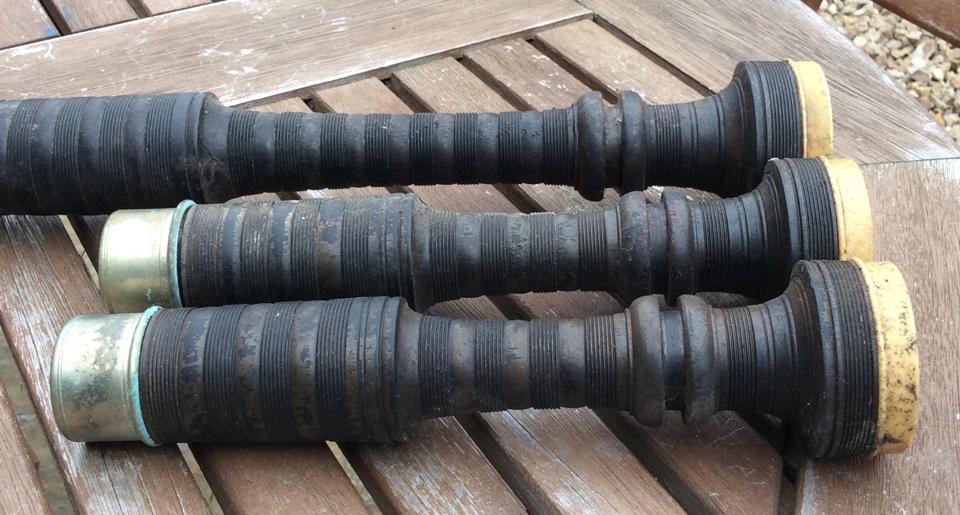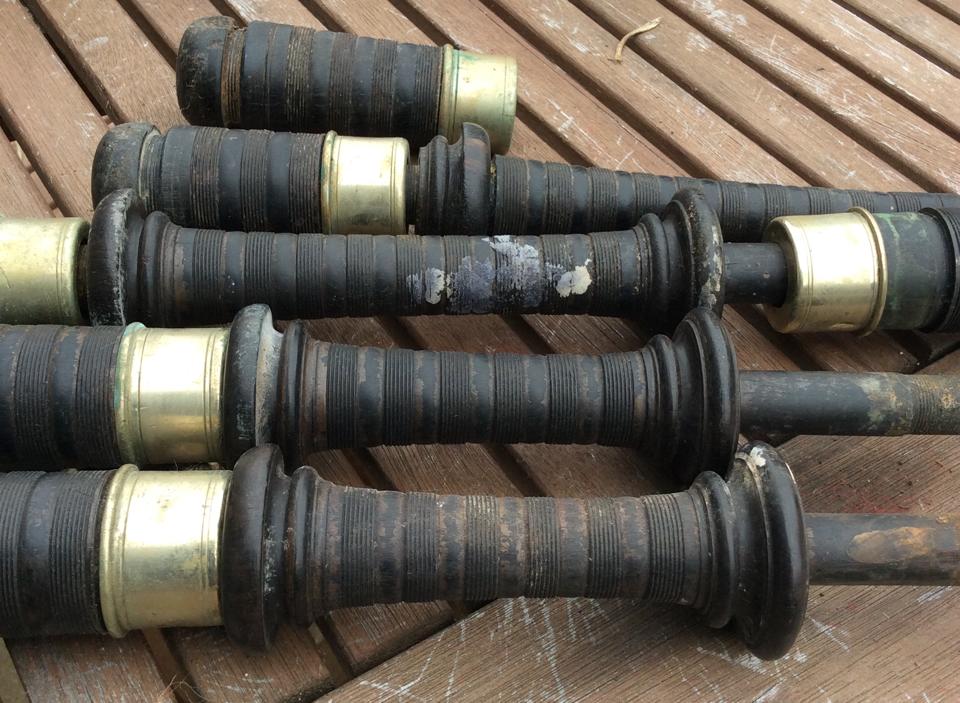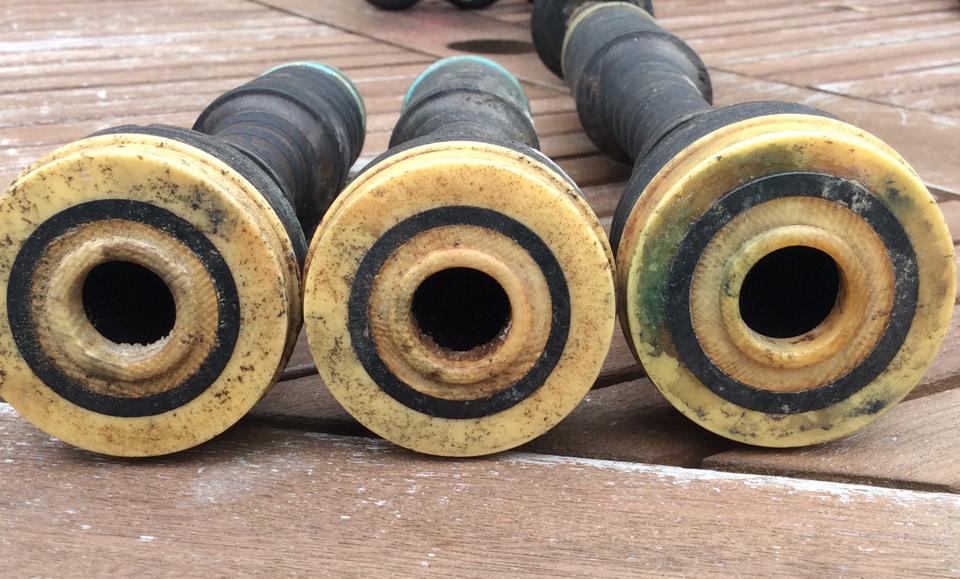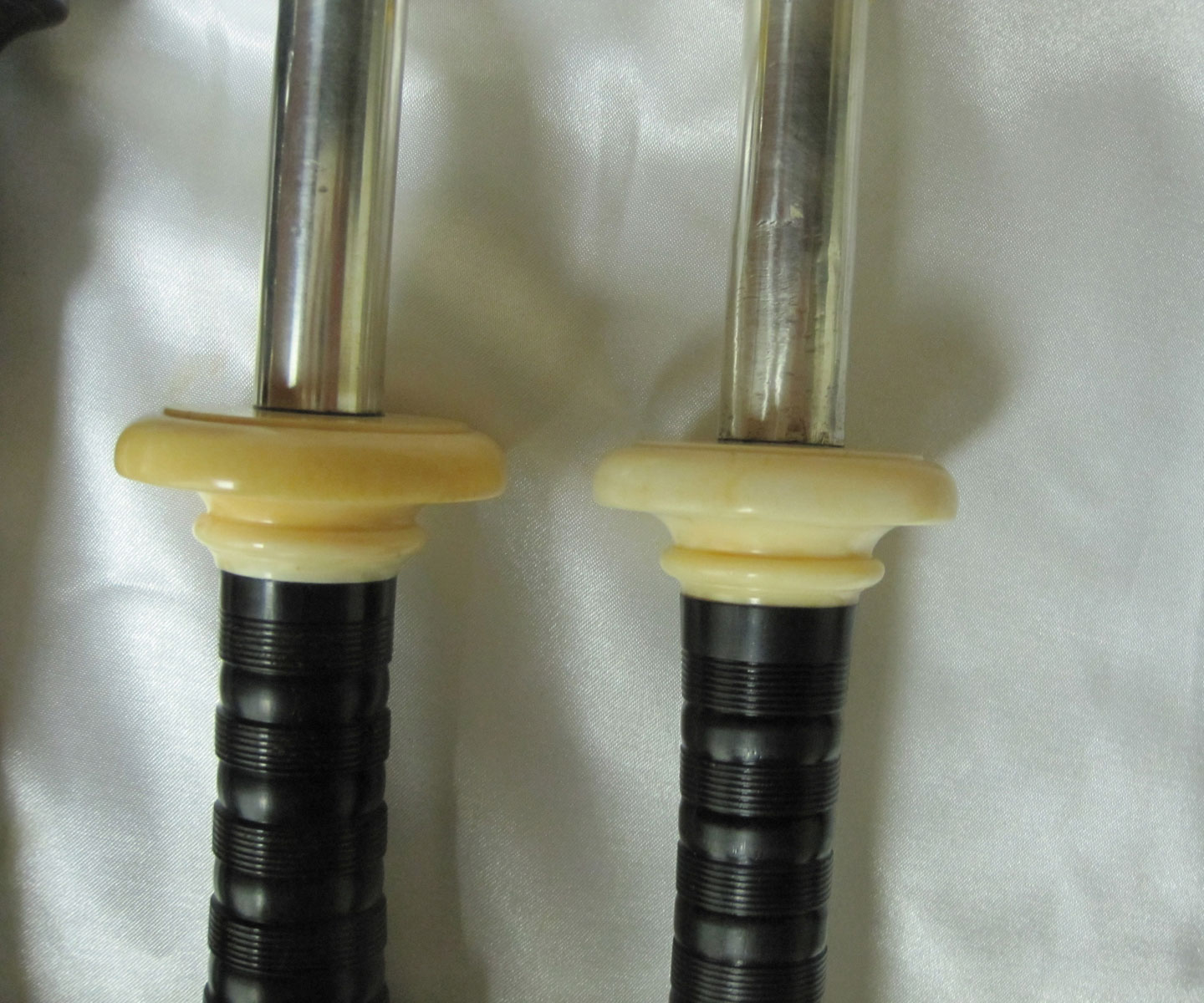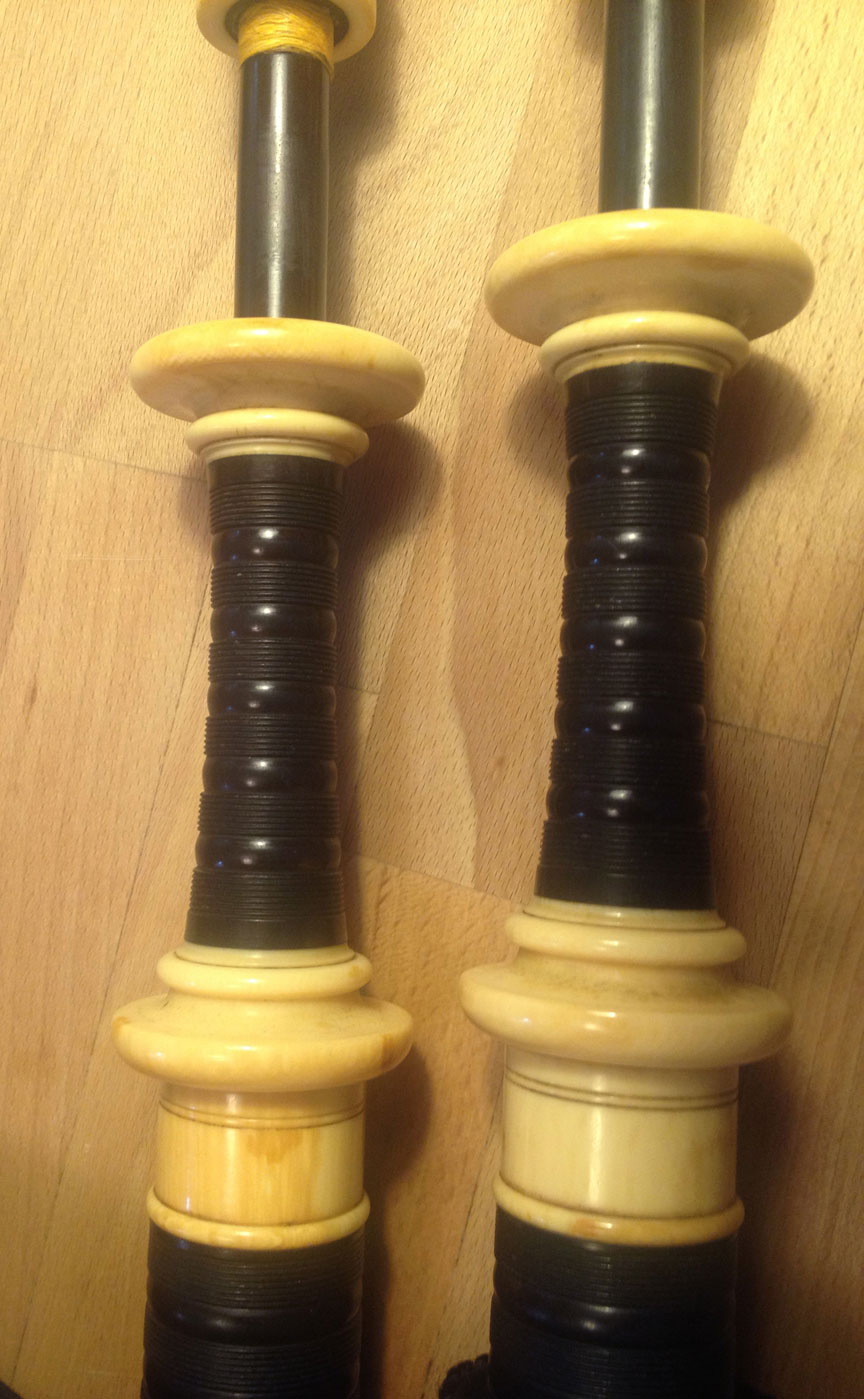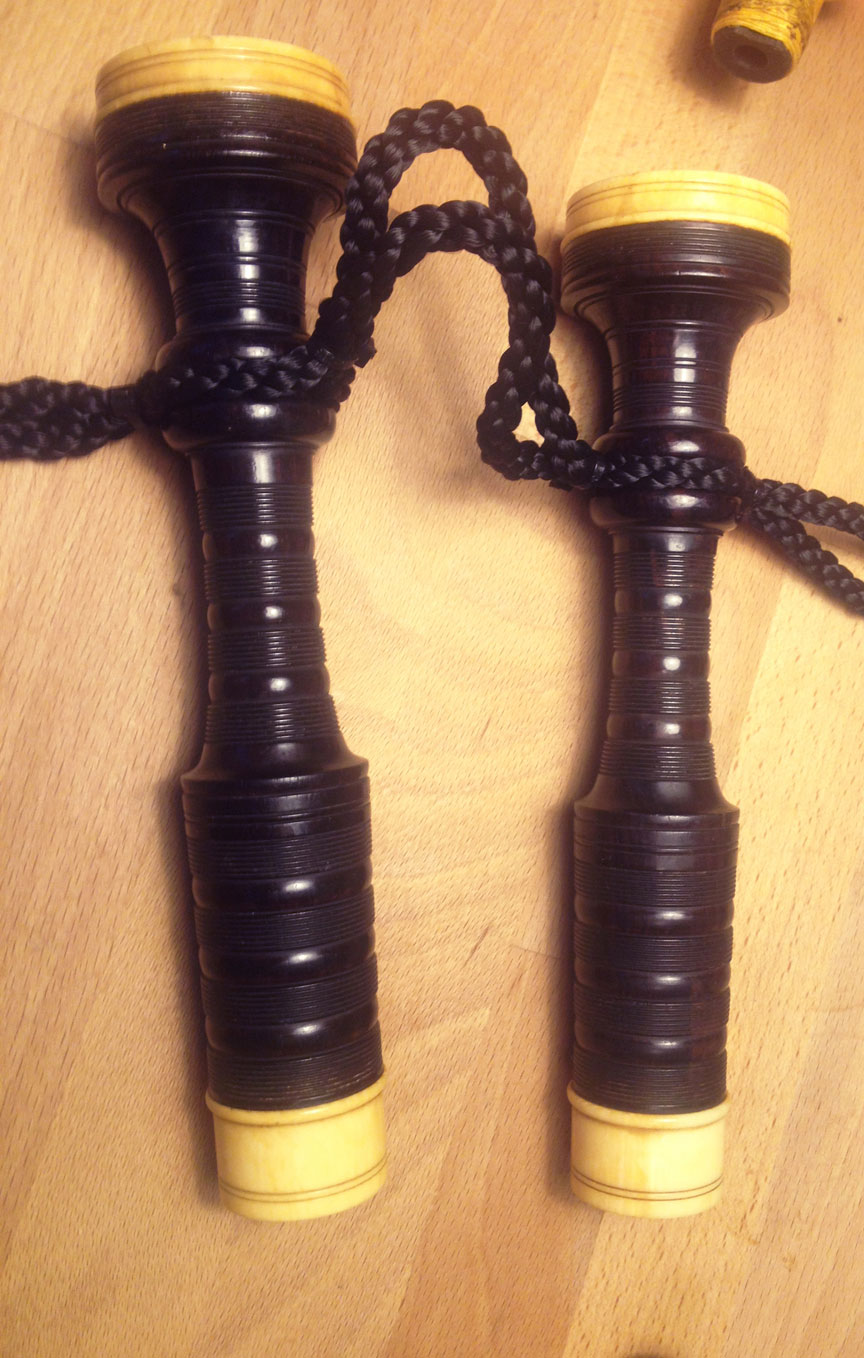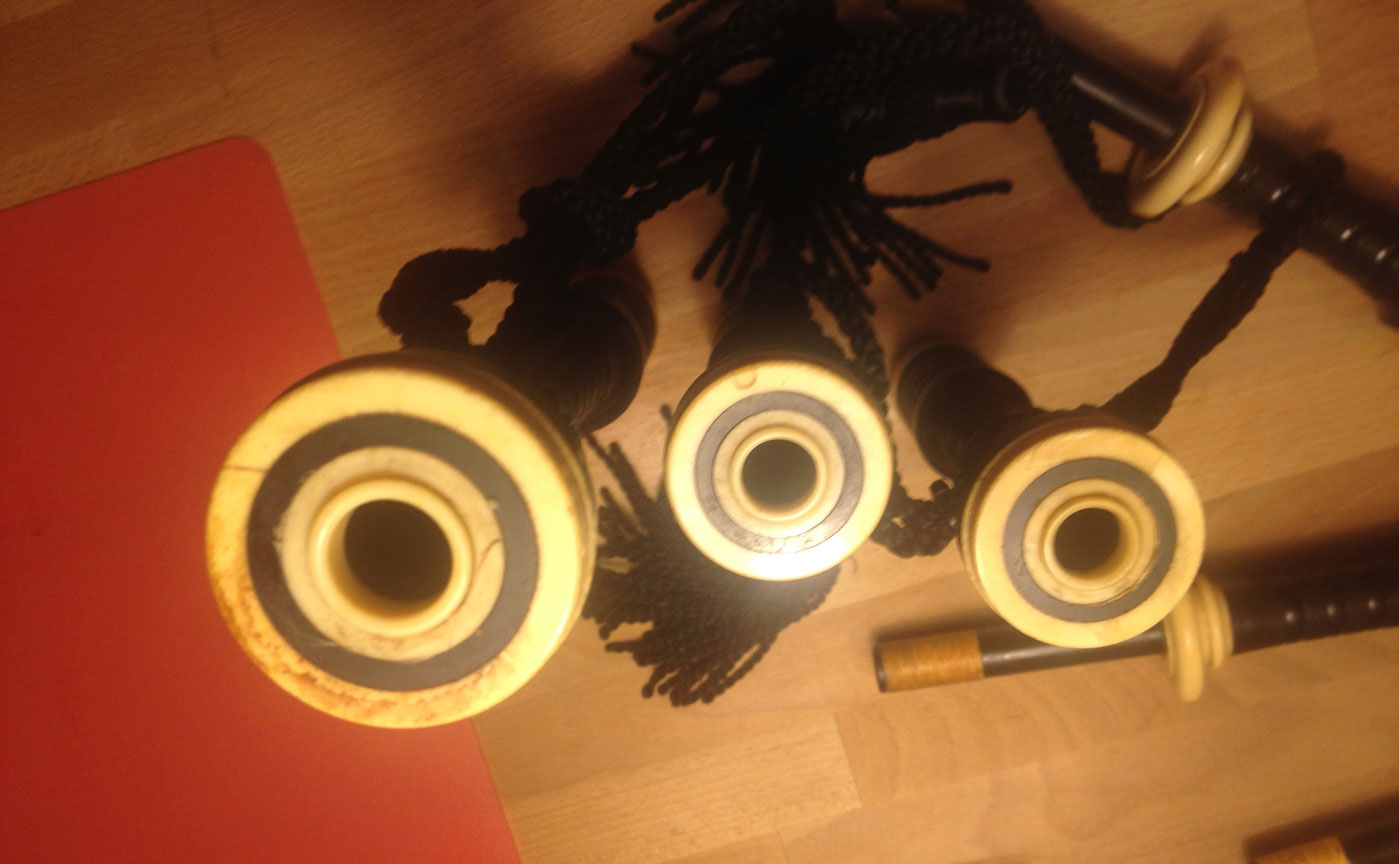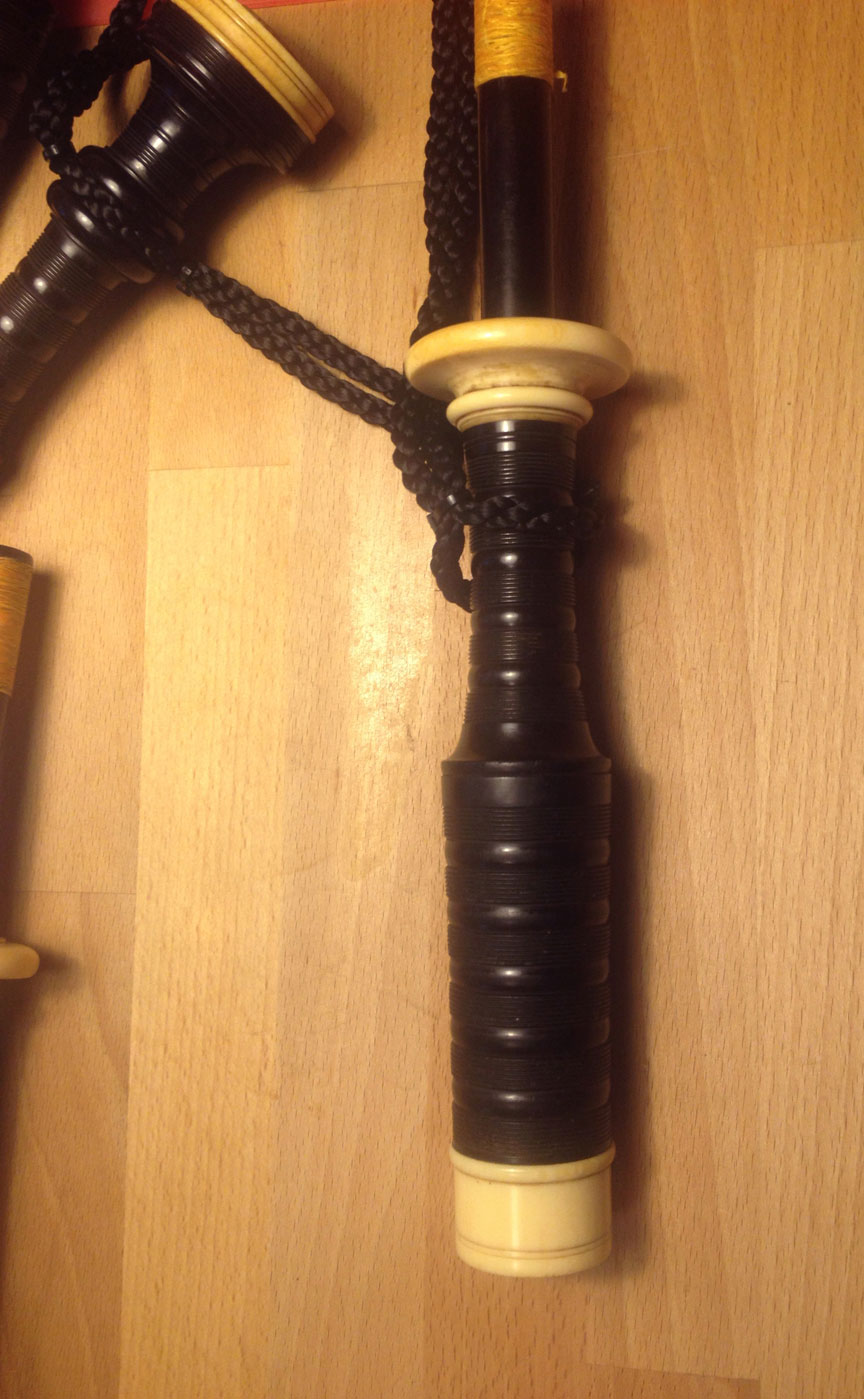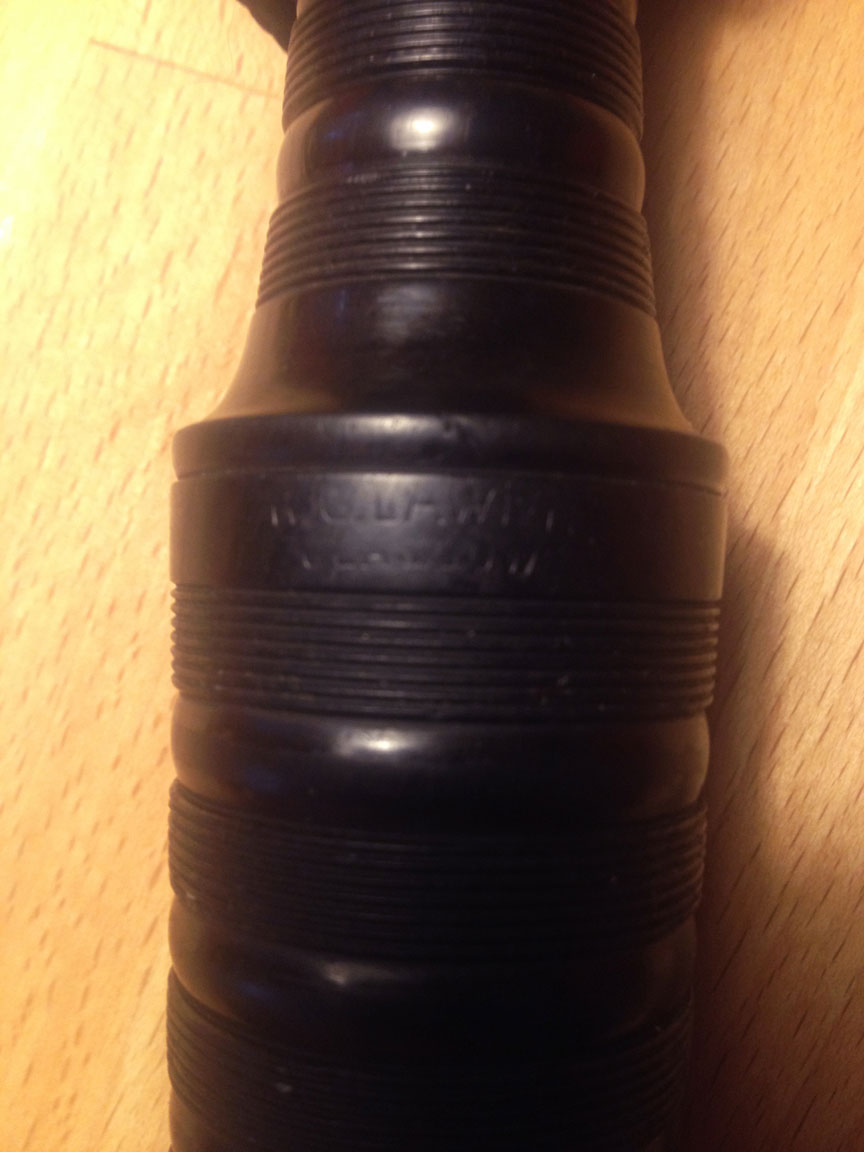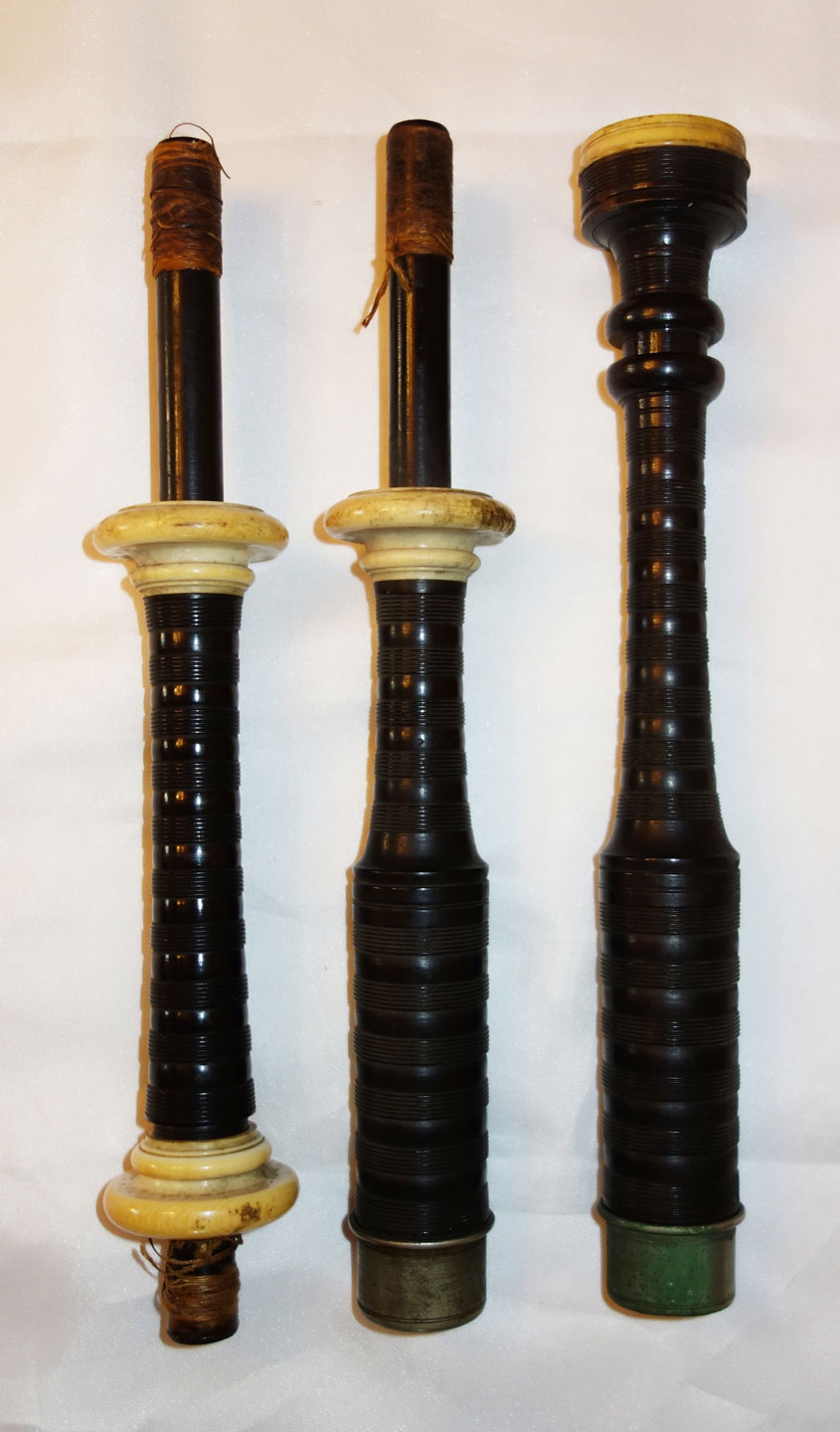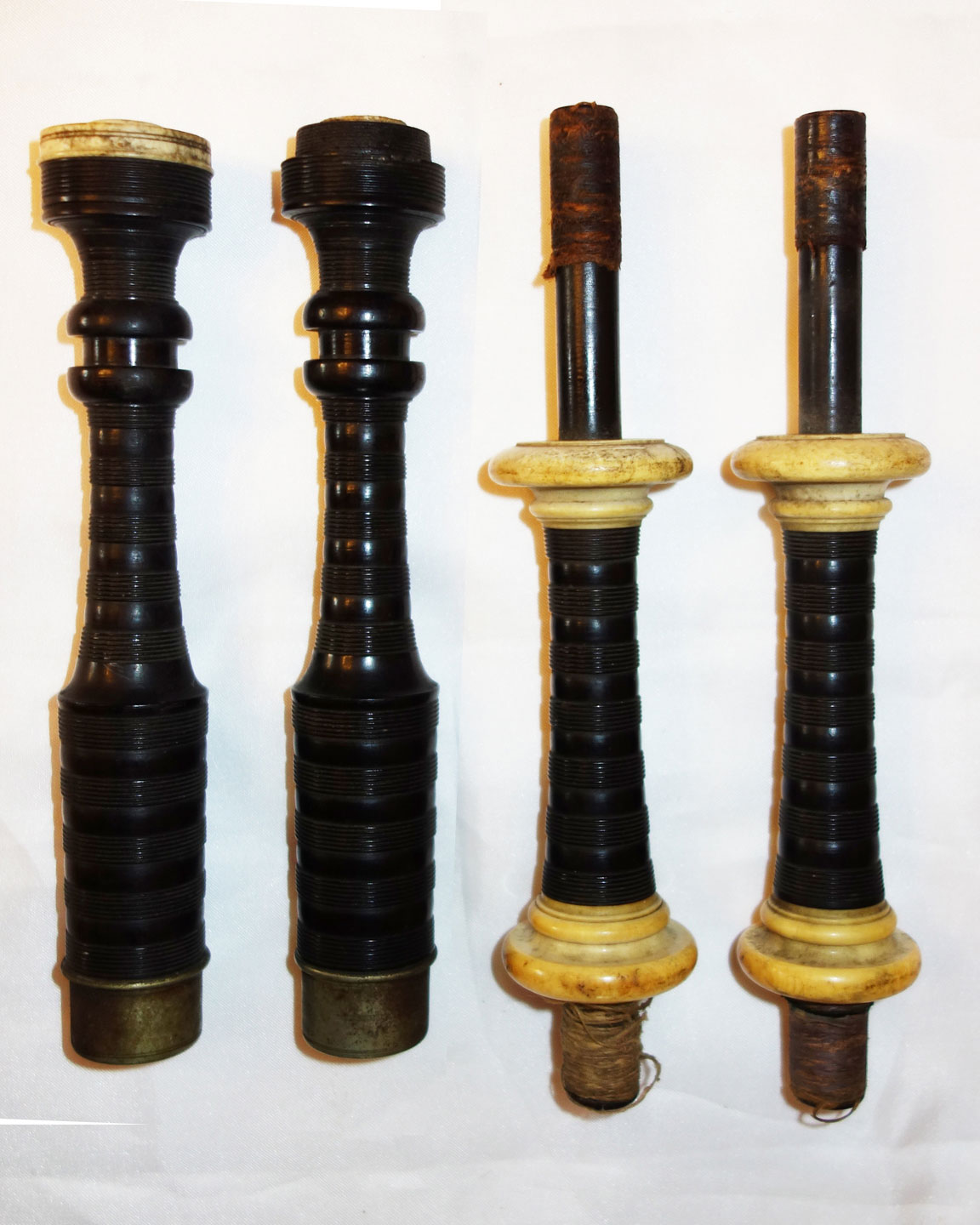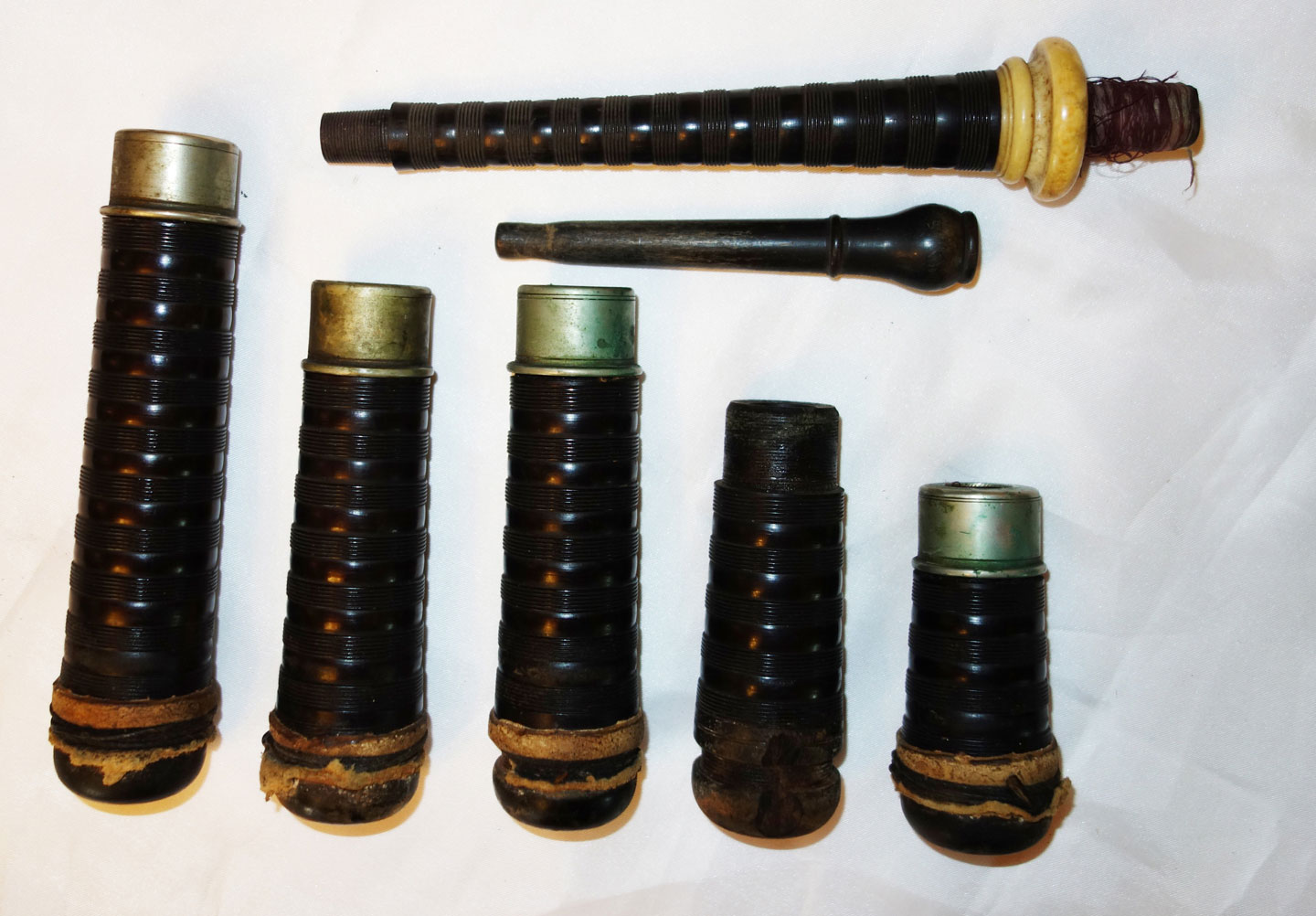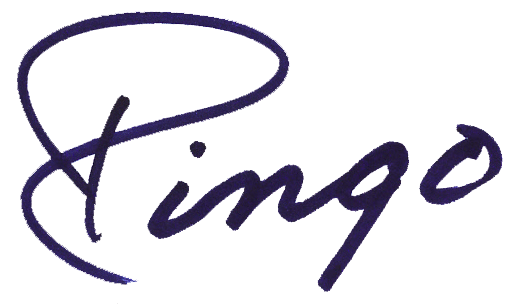R. G. Lawrie 1900 - WWI
These words and pictures from a friend.
"Just a part of the history of the pipes, I bought them online in an auction in Edinburgh against stiff opposition from bidders in the room. I had been on a family break in Edinburgh several weeks prior to the auction and had the chance to examine them closely. No cracks etc although all the silver was off the pipe with the exception of the three rings caps in which were was no movement in and pinned on. They were covered in sone sort og grease and were filthy. The was a new Hardie chanter with ivory sole in the box with three practice chanters, two Peter Henderson and one unknown maker. The Henderson chanters are stamped under the bulb. One is very usable (which I've cleaned up and am playing) the other has a rough-ish top on it. Three posters from Local Games in 1936, one of which I have framed up, two photographs of the owner, James Gowans, also now framed up. One photo shows him wearing a prize waistcoat when he was a young man in early 1900's and one of him playing the same instrument as an old man. He died in 1974. Also, music books, alot of them where he has hand written tunes out in beautiful script, both light music and piobaireachd. He had date several pages I presume on the day he wrote the tune out, one 23 June '99 (1899) and further on in the same book, 6th January 1900. I spoke to the vendor of the pipe, James Gowan's late granddaughter's husband who lives in Hamshire England. He stated that the pipes have not been played prior to James' death in 1974. Bearing this in mind, I am playing them in very gently, only a few minutes a day. I hope you will enjoy this insight to them.
Best regards
"Just a part of the history of the pipes, I bought them online in an auction in Edinburgh against stiff opposition from bidders in the room. I had been on a family break in Edinburgh several weeks prior to the auction and had the chance to examine them closely. No cracks etc although all the silver was off the pipe with the exception of the three rings caps in which were was no movement in and pinned on. They were covered in sone sort og grease and were filthy. The was a new Hardie chanter with ivory sole in the box with three practice chanters, two Peter Henderson and one unknown maker. The Henderson chanters are stamped under the bulb. One is very usable (which I've cleaned up and am playing) the other has a rough-ish top on it. Three posters from Local Games in 1936, one of which I have framed up, two photographs of the owner, James Gowans, also now framed up. One photo shows him wearing a prize waistcoat when he was a young man in early 1900's and one of him playing the same instrument as an old man. He died in 1974. Also, music books, alot of them where he has hand written tunes out in beautiful script, both light music and piobaireachd. He had date several pages I presume on the day he wrote the tune out, one 23 June '99 (1899) and further on in the same book, 6th January 1900. I spoke to the vendor of the pipe, James Gowan's late granddaughter's husband who lives in Hamshire England. He stated that the pipes have not been played prior to James' death in 1974. Bearing this in mind, I am playing them in very gently, only a few minutes a day. I hope you will enjoy this insight to them.
Best regards
When I see this bagpipe, and other very early Lawrie bagpipes, I also see Peter Henderson. In my view, it's impossible to separate the two until after RG's death in 1904. We know that sometime around 1910 the straight-sided ferrules with scribe lines were replaced with plain, tapered ferrules. Other changes took place both in profiles and details that moved Lawrie away from Henderson.
This next Lawrie bagpipe has silver hallmarked in 1901. This bagpipe is somewhat more helpful to us with its ivory mounts. The profiles of the various pieces are also very telling.
The earliest Lawrie bagpipes looked a lot like bagpipes made by Henderson. We're able to date the wood-mount set to the left by means of the straight-sided ferrules with scribe lines. Documentation tells us that these disappeared around 1910 when the tapered nickel ferrules with no scribe lines were introduced. We can also associate the profile and three beads on the short neck with this date. Thereafter you'll find mostly two beads with a flat and scribe lines.
Note the profile and three beads on the neck of the tenor tops. This is consistent with Lawrie bagpipes made around WWI.
Here's something I've only seen once or twice. Again, everything lines up with pre-John MacColl Lawrie bagpipes.
So that's about it for the earliest Lawrie bagpipes. If someone claims to own an 1890 or pre-1900 Lawrie, I would simply like to see the documentation or evidence that proves this. I hate "exaggerations". It's very easy to confuse MacPhee, Henderson, Early Lawrie, and MacRae bagpipes. Avoid rushing to judgement. Gather in as much information as possible and either narrow the choices or call it for what it is; possibly this or that. Every time we get it wrong, we muddy the waters. Please refer to the MacKay page for a wonderful story.
Another very early example of a Lawrie bagpipe. Note the straight-sided ferrules with scribe-lines.
